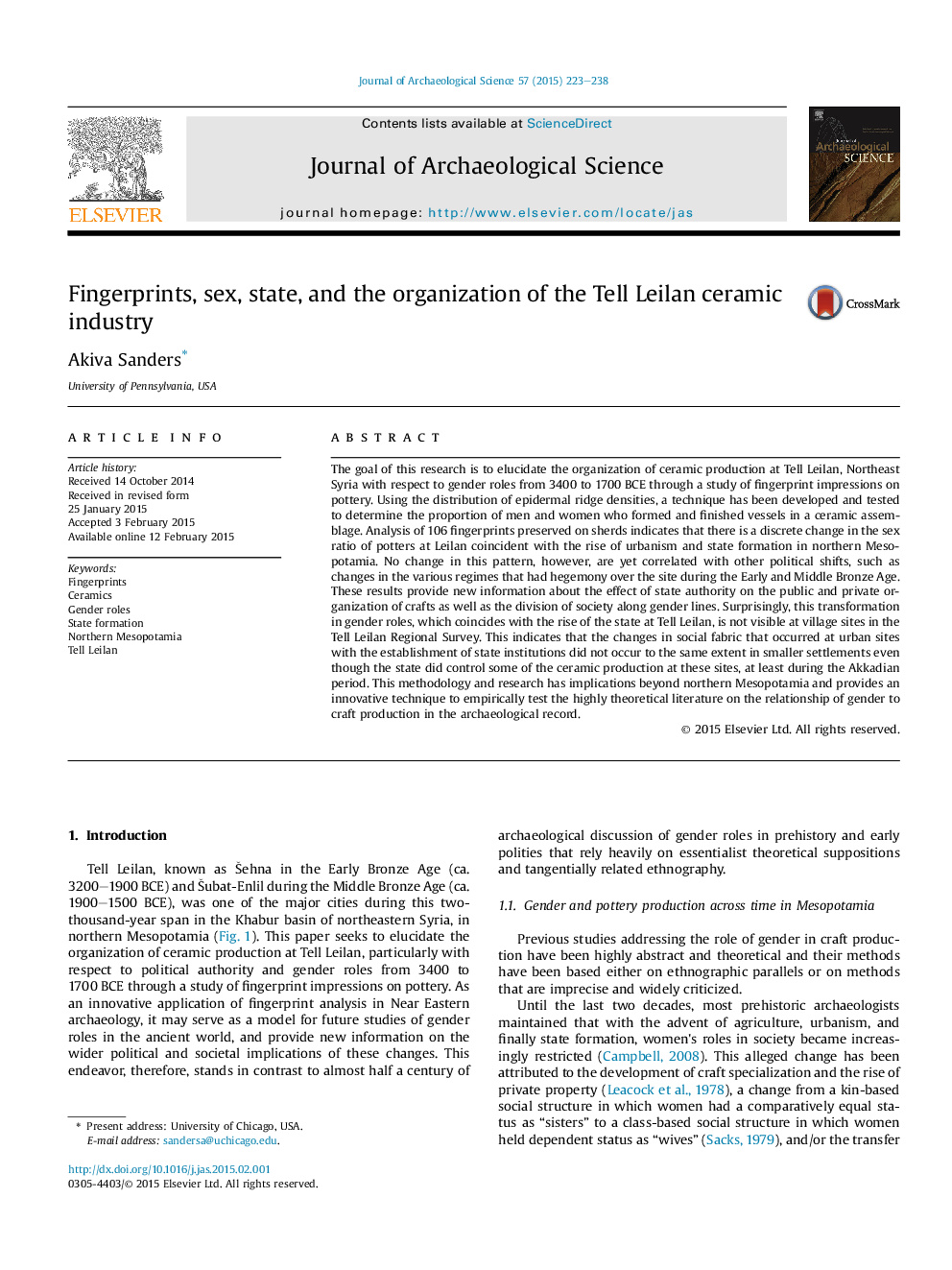| Article ID | Journal | Published Year | Pages | File Type |
|---|---|---|---|---|
| 7442051 | Journal of Archaeological Science | 2015 | 16 Pages |
Abstract
The goal of this research is to elucidate the organization of ceramic production at Tell Leilan, Northeast Syria with respect to gender roles from 3400 to 1700Â BCE through a study of fingerprint impressions on pottery. Using the distribution of epidermal ridge densities, a technique has been developed and tested to determine the proportion of men and women who formed and finished vessels in a ceramic assemblage. Analysis of 106 fingerprints preserved on sherds indicates that there is a discrete change in the sex ratio of potters at Leilan coincident with the rise of urbanism and state formation in northern Mesopotamia. No change in this pattern, however, are yet correlated with other political shifts, such as changes in the various regimes that had hegemony over the site during the Early and Middle Bronze Age. These results provide new information about the effect of state authority on the public and private organization of crafts as well as the division of society along gender lines. Surprisingly, this transformation in gender roles, which coincides with the rise of the state at Tell Leilan, is not visible at village sites in the Tell Leilan Regional Survey. This indicates that the changes in social fabric that occurred at urban sites with the establishment of state institutions did not occur to the same extent in smaller settlements even though the state did control some of the ceramic production at these sites, at least during the Akkadian period. This methodology and research has implications beyond northern Mesopotamia and provides an innovative technique to empirically test the highly theoretical literature on the relationship of gender to craft production in the archaeological record.
Related Topics
Physical Sciences and Engineering
Materials Science
Materials Science (General)
Authors
Akiva Sanders,
